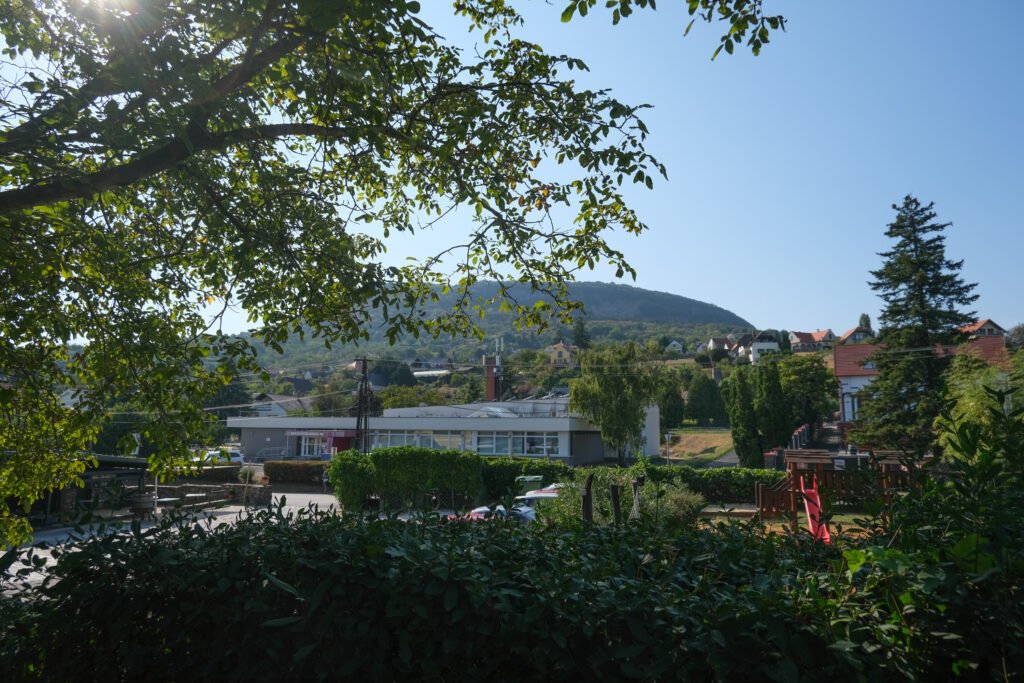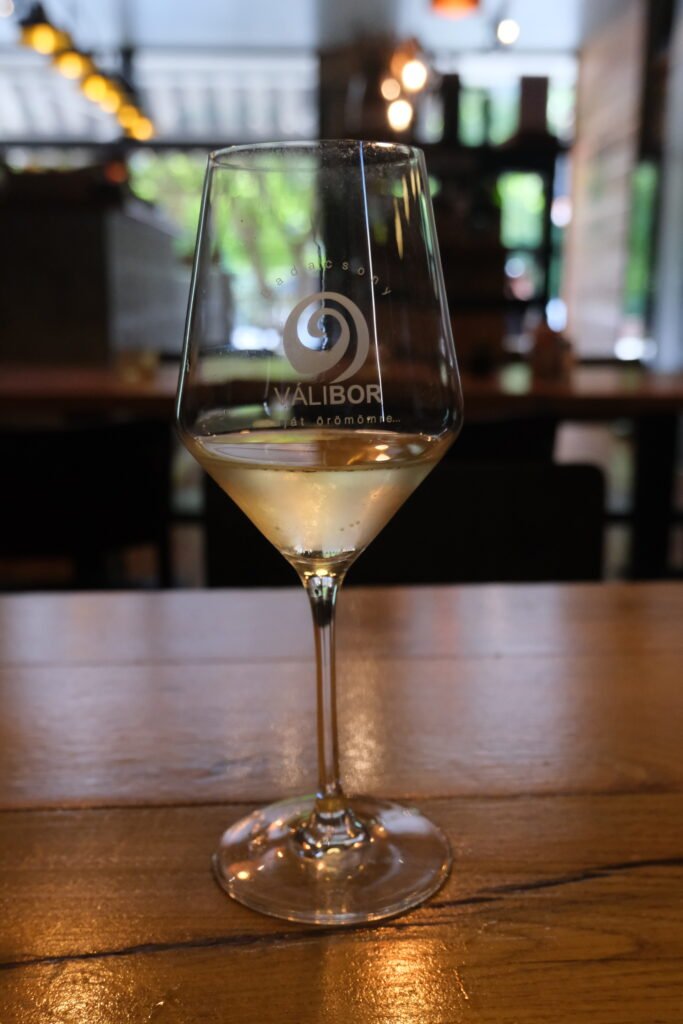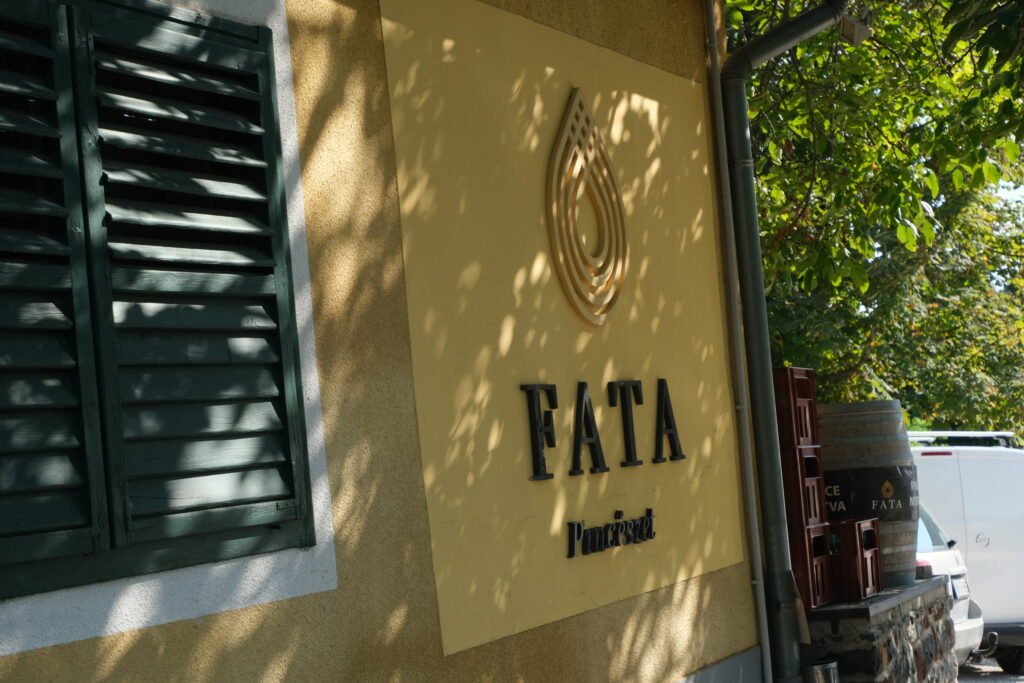
Hungary: The Badacsony Region
Besides Budapest, one of the most popular tourist destinations in Hungary is lake Balaton. This is the largest fresh water lake in Hungary and Central Europe. It also sits in an area which historically was covered by the ocean, and therefore, it is rich in minerals. Indeed, the area also boasts a hills created by the now dormant volcanoes. All of this means there are some very interesting, minerally driven wines from this region.
Depending on where on lake Balaton you are heading, it is possible to get there by train from the capital Budapest. The journey will take about two and half to three hours. The trainline boasts numerous towns before you get to Badacsony itself and many of them have wineries. For enthusiastic walkers, it is possible to climb the hills and discovery wineries further from the lake itself.

My top tip for the train is that during the summer months, there are air conditioned trains or carriages on the trains, it is very worth booking these. In September, without air conditioning sitting in what was essentially a metal tube got a little bit warm!
The Badacsony region is located on the North shores of Lake Balaton and is part of the wider Balaton wine district, a collection of 6 wine regions located in the Western part of Hungary. This particular area of the lake is the most hilly, and has a number of now dormant volcanoes which create slopes on which wines can thrive.
The lake itself creates some distinctive climatic features. The lake mirrors the sunlight, helps regulate temperatures, and maintains ideal humidity, leading to cooler summers that retain the grapes’ acidity. The water mass retains heat which helps offset the impact of cold breezes, but also provides a moderating influence in warm summer temperatures.
Vineyards near the lake enjoy a longer, more gradual growing season, with slower grape ripening that promotes balanced sugar-acid development and enhanced flavor complexity. In contrast to the Southern shores which are slightly warmer and can support the development of red grape varieties, the Badacsony wine district is known primarily for white wines.
Badacsony hill is the tallest peak in the area reaching 438m in height. Here the hills shelter the vineyards, most of which are located on the south facing hills, from Northerly winds. The area has been desribed as an undiscovered Hungarian Tuscany. The scenic views of the lake which can be enjoyed from the volcanic hills, and attractions such as Szigliget Castle make this a popular area with tourists, especially when warmer weather arrives.
The region is predominantly known for white wines. Grapes here tend to ripen well, generating high sugar levels and therefore, when the must is fermented they can often reach relatively high levels of alcohol. Wines are generally characterised by very prounounced minerality, good acid levels and prominent fruits. Most wines are fuller bodied, well structured and aromatic.
The most planted variety is Olaszrizling or Italian Riesling, which is neither Italian in origin or a riesling. The variety is largely a blank canvas which allows winemakers to create a number of different styles form the grape. These range from light, fruit forward, floral expressions to full bodied wines with greater complexity with a somewhat nutty character. The typical tasting note for this variety is almond note on the palate. It also has a tendency to have a somewhat oily or waxy texture.
The second most planted variety is the indigenous Hungarian Kéknyelű. This variety is unlikely to be found in any volume outside of the Balaton wine region. The name refers to the blue stalks which develop as the berries ripen. The variety has a very unique flavour profile which is aromatic, usually high in acidity, floral, mineral notes with some spice and herbal flavours present. Wines are often age worthy. Detectable fruits can range from citrus and orchard fruits through to tropical fruits. This really is a very special variety and one of my favourites from the region.
Szürkebarát (Pinot Gris) is also a popular variety here and produces rich, honeyed, slightly spicy whites. Like many of the wines here the minerality shines through, with more prounounced spice and body that Italian expressions of this variety. Wines are made in both dry and off-dry styles with a range of qualities and levels of complexity.
In total there are well over 20 white varieties and 5 – 10 red varieties grown in this area. Red wines tend to be lighter bodied. There are occasionally very nice Pinot Noir wines here, but the region is definitely more well known for high quality white wines. In addition, of course, there is a fair amount of sparkling wine produced here as well which ranges from easy drinking and simple in style, through to more complex aged examples.
One style which is unique to this region is the Ürmös wine. This wine is a white wine made with the use of herbs which is somewhat reminicent of a Vermouth with lower alcohol levels. Olaszrizling or Szürkebarát are often used as base wines, but other white varieties may be used as single variety bases or different varieties used in a blend. It is still quite rare to find examples, but if you do its a very enjoyable wine style.
So which wineries have I visited and what did I think…
Válibor

As I outlined above I only visited for a day, and the train journey took around 3 hours from Budapest. That did mean I had limited time to visit wineries. I, therefore, restricted myself to those which were within easy walking distance of the train station at Badacsonytomaj where I disembarked. A short walk into the centre of the town brought me to the Válibor wine bar / cafe.
The tasting room was very pleasant and the service was excellent. Included in the tasting was a very generous food platter with some amazing cheese, meats and bread. After the long train journey and walk up the hill I was very appreciative of the air conditioning, as well as the warm hospitality. Had I not wanted to cool down, it would have been possible to sit on the open air terrace outside and take in the view of the church opposite and the very pleasant street on which the bar is located.
I did the 6 wine tasting which was white wine dominated, all of which were excellent wines. Featured among the line up were the Badcsonyi Budai, a wine made from the Budai Zöld grape variety. This was a very fresh approachable wine with white and orchard fruit flavours, and the characteristic Badacsony minerality.
Of course, an Olaszrizling featured too, as well as the Luca Bora made from the Ottonel Muscat and Yellow Muscat grapes. This wine has citrus, green apply, floral notes, but also some spice on the palate which was very pleasant and cut through the acids. Alongside this was a very nice Kéknyelű which I do not mind admitting I have subsequently purchased multiple bottles of in Budapest.
Interestingly, the next wine was a Syrah. This was perhaps lighter in style than what most people will imagine, but still had very nice dark fruit flavours, spice, violet, cocoa bean and pepper notes. Not included in the tasting, but one I couldn’t leave without trying was the Pinot Noir. I had tried this in a wine bar in Budapest and loved it, and I was excited to try it again. It did not disappoint. Finally, a Pinot Gris Rosé which was nice and fruity, with good acidity and characteristic minerality.
In many ways it is a good thing that this winery is located 3 hours from Budapest, because I think I could happily spend far too much time and money there. I would wholeheartedly recommend a visit if you are in the Balaton area. I thought the tasting was excellent and I very much enjoyed the wines. As I say, both the Pinot Noir and the Kéknyelű have subsequently found themselves on my purchase list on subsequent visits to Hungary.
Fata Pince

A little further up the street from the previous winery was Fata Pince. If you decide to visit my top tip is that it is a little tucked away from the mainroad next to what looks like a restaurant and I had to go in and ask where the winery was. To locate it from the entrance walk further back and up to the left hand side opposite the restaurant. The walk itself was 10-15 minutes up a steady hill.
The lineup here included an Olaszrizling, an Ottonel Muskotály, a Rozé, a Kéknyelű, a Bodzarbor (Elderberry wine) and the famous Ürmös wine. Not included in the tasting, but I also tried the Carbenet Sauvignon as well. The winery is very much a family winery, and the view sitting outside of the hill was stunning and very pleasant on a sunny September day.
The wines were well made and very typical of Balaton expressions of the varieties. It was particularly interesting to try the Elderflower wine and the Ürmös (Woodworm) wines. I really appreicated the way that the Olaszrizling florality in the basewine of the Bodzarbor was brought to life by the addition of the Elderflower. I also really enjoyed the spice, herby notes of the Woodworm wine. It was like Christmas in a glass.
Accompanying the wines were some cheese cubes which were very pleasant and made the experience of sitting outside drinking wine very nice. The hospitality was friendly, but not overbearing. Whenever my glass reached an empty state, the next wine appeared. But there was no sense of being rushed. Each wine came with a brief explanation and discussion about the tasting notes from the server.
I would recommend a stop here if you are nearby and want to enjoy some typical Badacsony wines as well as a couple of wines I imagine most people will not have tried anywhere else. I would also recommend trying the Cabernet Sauvignon if only to experience how this grape can taste when it is not grown in a warm, sunny climate and how much lighter the style is.
From Fata the train station at Badacsonytomaj was a fairly easy walk downhill, and I’d definitely recommend doing the uphill at the start of the day. It took me about 15 minutes to get back, but I was not walking particularly fast. I enjoyed the train ride back to Budapest with occasional glimpses of the lake for the first 45 minutes or so.
Of course there are many more wineries that you might want to visit in the Badacsony region. While I didn’t visit the wineries when in the region due to time constraints, I have tried wines from Laposa, Gilvesy, Szarsi, Málik, Szent György-Hegy and Pap wines, all of which were worth trying. Of these, Laposa has a very impressive wine terrace with great views and that would definitely be on my list to try next visit.
For me, Badacsony makes a good day trip with a couple of wineries, but I also think it would be a good overnight stop. A day trip will take the whole day, and if you want to truly make the most of the time, you will probably prefer to stay into the evening. Given the six hour round trip to Budapest, its probably better to stay, but its perfectly doable to come back the same day and that is what I did.
If I had been there longer, I would probably have walked from Badaconytomaj into Badacsony itself along the Roman road, stopping at some of the other wineries along the way, and possibly ending up on one of the nice terraces overlooking lake Balaton.
So, if you are planning an extended trip to Hungary, or are currently living in Budapest and fancy a really nice day trip or quick overnight stay, I’d highly recommend at trip to Badacsony. If you do decide to take a trip there, let me know which wineries you decide to visit and what your favourite vineyard and wine were. And as always, keep exploring this beautiful planet we live on, one glass at a time!